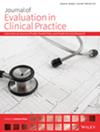Length of Stay and Its Affecting Factors in a General Hospital of a Multiple Nationality City in Western China
Abstract
Background
Length of stay (LOS) serves as a key metric for assessing hospital efficiency. However, LOS is complex and multidimensional, and influenced by various factors that require further explorations. The purpose of the present study was to examine factors and their interactions affecting LOS in a general hospital in western China.
Methods
This cross-sectional study involved 9631 cases admitted to a tertiary general hospital in Guangxi province, China, from December 2018 to October 2020. LOS and 17 additional variables were collected from the Hospital Information System and integratively analyzed. As a novel factor created in the current study, agreement between admission and discharge departments was evaluated by comparing the admission department with the discharge department. Kruskal–Wallis and Mann–Whitney U tests were used to analyze the relationship of LOS with other variables. Multiple linear regression was employed to identify predictors of LOS.
Results
Variations in LOS were noted among patients based on gender, occupation, patient sources, contact persons, admission types, discharge types, disease severity types or medical payment methods, or patients with or without agreement between admission and discharge departments, the presence of hospital acquired infections (HAI) or antibiotic usages. No significant differences were found related to nationalities, marital statuses, patients with or without agreement between outpatient and discharge diagnoses, or agreement between admission and discharge diagnoses. Moreover, the number of hospitalizations, admission type, discharge type, disease severity type, agreement between admission and discharge departments, HAI, antibiotic usage, and medical payment method significantly predicted LOS, while others did not. The direct effects of agreement between admission and discharge departments on LOS were 86.88% of the total effects.
Conclusion
Factors affecting LOS were observed in the hospital, including agreement between admission and discharge departments. Recommendations should focus on resource allocation and optimization in decision-making to direct patients to suitable departments while improving other critical factors.

 求助内容:
求助内容: 应助结果提醒方式:
应助结果提醒方式:


